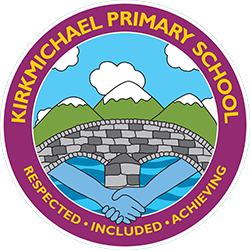Modern Languages
![]() Education Scotland - Modern Languages
Education Scotland - Modern Languages
What can learning in modern languages enable children and young people to achieve?
Learning other languages enables children and young people to make connections with different people and their cultures and to play a fuller part as global citizens.
Learning through the languages area of the curriculum enables children and young people to:
- develop their ability to communicate their thoughts and feelings and respond to those of other people
- develop the high level of skills in listening, talking, reading and writing which are essential for learning, work and life
- use different media effectively for learning and communication
- develop a secure understanding of how language works, and use language well to communicate ideas and information in English and other languages
- exercise their intellectual curiosity by questioning and developing their understanding, and use creative and critical thinking to synthesise ideas and arguments
- enhance their enjoyment and their understanding of their own and other cultures through literature and other forms of language
- develop competence in different languages so that they can understand and communicate including, for some, in work settings.
Building the Curriculum 1
It is important for the nation’s prosperity that young people are attracted to learning a modern language and that they become confident users of a modern language, well equipped with the skills needed in the new Europe and in the global marketplace. This framework of experiences and outcomes is intended to help to address this national need.
The ability to use language lies at the centre of thinking and learning. The interconnected nature of language learning lies at the heart of the modern languages experiences and outcomes.
By the time they begin their study of a modern language in primary 1, learners will have acquired their home language(s) and will be beginning to study English in a school context. Teachers are in an ideal position to help children build the target language alongside their undertstanding of English and in other home or community languages and to help them to learn a new language (for example, how to listen, speak, read, write and how to understand phonics), and how this will help them to learn a new language. However, the learning of a new language also provides the opportunity to help learners to reflect on their first language and actively seek comparisons between the features of their first and second languages. In this way, teachers delivering modern languages have a unique contribution to make in helping learners not only to reflect on the skills required to learn a new language, but also to revisit, improve and understand more securely aspects of literacy in their first language.
Learning a modern language provides children and young people with a means of communicating directly with others from different backgrounds enhancing their understanding and enjoyment of other cultures and of their own. They gain insights into other ways of thinking and other views of the world and therefore develop a much richer understanding of their roles as global citizens.
One of the key aims of modern languages teaching is to develop young people’s ‘communicative competence so that they are able to use and enjoy the language effectively in real situations and see language learning as offering valuable skills for life and work
- active learning and planned, purposeful play
- the development of problem-solving skills
- the use of appropriate contexts and experiences familiar to children and young people
- embedding ICT in all learning and teaching
- building on the principles of Assessment is for Learning
- developing children and young people’s understanding of how they have acquired and learned their first language and how this relates to their study of languages.
At early and at first levels, children will be developing generic skills in their first language. These include taking part in conversations, developing listening, reading and writing skills and knowledge about language. All of these are relevant to learning other languages. Teachers will build on children’s natural curiosity for sounds and words, and their strong desire to communicate by planning activities which include playing games, singing songs, carrying out simple instructions, and playing with simple poetry and rhyme. In this way, children can begin to be enthusiastic and confident language learners.
Whenever they start their learning of another language, children need to experience success by taking part in practical activities that they can enjoy. Language learning is greatly enhanced where it is linked to or embedded in the wider curriculum so that children and young people can enjoy exploring and using language in meaningful contexts and can relate their language learning to other work across the curriculum Very importantly, teachers can make great use of opportunities to link language learning with progress in English, Gàidhlig and with other languages. From P5 at the latest, children will begin learning a second additional language (L3). This can be delivered in a number of ways and will enable children to explore and experiment with sound patterns and make links and comparisons between languages, including languages used in the school community.
References:
Language Learning in Scotland: A 1+2 Approach
http://www.gov.scot/Publications/2012/05/3670
Further Guidance on L3
http://www.educationscotland.gov.uk/Images/L3SupplementaryGuidance160215_tcm4-852848.pdf
Assessing progress and achievement in Modern Languages: http://www.educationscotland.gov.uk/Images/ModernLanguages012014_tcm4-744656.pdf
Common European Framework for Languages (CEFR)
http://www.coe.int/t/dg4/linguistic/Cadre1_en.asp

